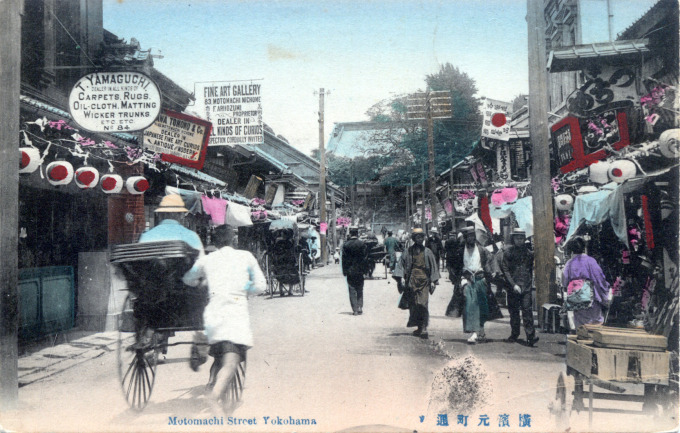“Motomachi was originally a quiet farming and fishing village until 1859, when the Port of Yokohama was opened.
“Soon after the start of the Meiji era [in 1868], the number of foreign residents increased. And Western influence became more evident in Motomachi, with the opening of many cafés, bakeries, and boutiques. Such shops were uncommon in Japan at the time, and Motomachi helped introduce Western culture into Japan.”
– Wikipedia
“Yokohama in the early twentieth century was an international city packed with adventurers, millionaires, fugitives, and drifters from every corner of the world. The port was ‘completely free of tradition,’ rising on the doorsteps of Japan like ‘a mirage in the desert,’ wrote one Japanese novelist.
“Bengali shopkeepers, Lebanese jewelers, Chinese moneychangers, Russian optometrists, French diplomats, Korean laborers, English silk merchants, Spanish missionaries, American tea traders, and citizens and castoffs of two dozen nations jostled along the Bund, Water Street and Main Street [Motomachi].”
– Yokohama Burning: The Deadly 1923 Earthquake and Fire that Helped Forge the Path to World War II, Joshua Hammer, 2006



Pingback: Yokohama Bluff, c. 1910. | Old Tokyo
Pingback: Isesaki-cho, Yokohama, c. 1930. | Old Tokyo